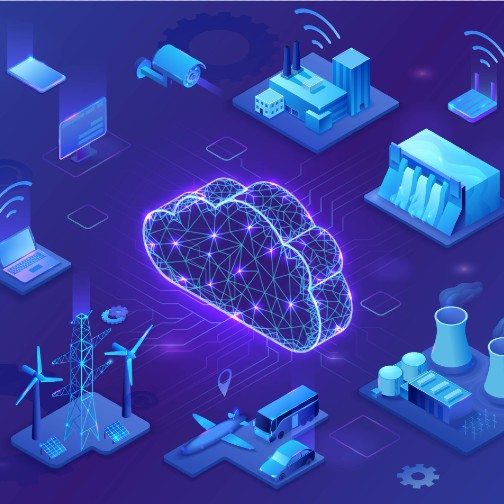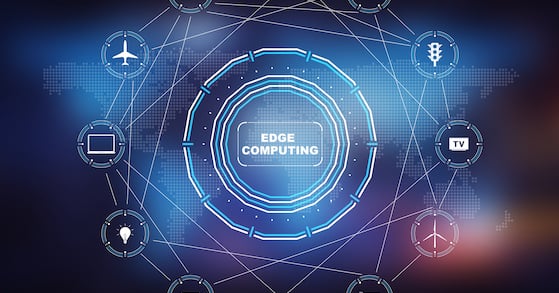3 of the Biggest Mistakes Companies Make When Moving to the Edge
To say that Edge computing is growing in popularity is a pretty big understatement. In fact, according to Gartner, by 2025 75% of all enterprise-generated data will be created and processed outside the traditional data center or cloud. Low latency is the primary driver for this surge, but there are also others, like impressive cost savings and bandwidth optimization.
Is it simple to bring computing to The Edge? Yes. But there are nonetheless several opportunities to make costly mistakes, and this post shines a light on three of the most important to avoid when planning your deployment.
Before we get into the factors, though, we need to define where The Edge installation is. We have all heard of the Edge Data Center, an installation at the edge of a network but installed in a more traditional IT space – like a data center, but usually on a smaller scale. For this kind of installation, plan as if you are going into a data center...because you are.
Now, move out past the Edge Data Center to a more remote installation; you’re still at The Edge, but a better term might be Spine Data Center. This kind of deployment can be in a more traditional IT space, but could also be more remote, maybe a container or similar pre-engineered solution. And out there, the factors discussed below become more relevant.
Finally, let’s go all the way out to The Edge – from one to a few (less than 10) standalone footprints in any location that is not a traditional IT space. You can call it an Edge Data Center, but clearly the issues discussed below are critical to a successful, stable, and secure installation.
Please keep these general definitions in mind, with the following rule: The further you get from a traditional IT space, the more important the three following factors become.
1) Failure to Evaluate The Basics
It’s true what they say: “When you fail to prepare you prepare to fail.” Without a thoughtful assessment of your needs and the location of the deployment, you could end up with a one that’s compromised from the get-go. Among the factors you need to consider are:
- Location/environment. When the Edge system is located in an environment that is harsh or uncontrolled, like a manufacturing facility, it’s more prone to contaminants such as dust, debris and moisture; other types of locations present other risks, such as security breaches or severe temperature fluctuations. It’s important to select IT enclosures (also called cabinets) designed for the specific conditions of your deployment
- Redundancy. A single hour of downtime could cost your organization hundreds of thousands of dollars or more, making redundancy a critical component of any successful Edge system. Different industries require different levels of redundancy, but all require a plan for reliable power supply, uninterrupted power supply (UPS) systems, and cooling. Weigh your redundancy needs vs. the costs of providing an acceptable level of redundancy
- Staff. Often, Edge data centers are placed in locations that do not have the benefit of a full-time IT staff to address issues as they occur; this makes cabinet-based monitoring capabilities and security features very important. Many sites may also have a transient workforce in the same general spaces as the Edge Standalone footprints; it becomes critical to make sure they cause no damage
2) Selecting the Wrong Enclosure
Edge systems are often located in environments in which temperature and air flow change by the minute (think an oil rig or wind turbine farm), making the enclosure the primary defense against the elements and contaminants. Without a well-engineered enclosure, data – and entire networks – are at risk.
- NEMA/IP rating. It’s important to choose the right protection based on the location of the enclosure and the risks associated with them. If your location experiences falling debris or splashing water, for example, you need to choose an enclosure with a higher NEMA or IP rating than if that enclosure were placed inside a bank branch office or school’s data closet
- Flexibility: You don’t want to limit your ability to expand the deployment by selecting enclosures that aren’t capable of scaling with you. Choose those that can be reconfigured to accommodate different equipment (and equipment of different sizes). Modular cabinets make this simple, often requiring no cutting or welding to modify (and no skilled labor)
3) Improper Cooling
Often Edge deployments are placed in rooms that weren’t designed to deliver cooling appropriate for the heat generated by IT equipment. And even if in a “typical” IT space, there still may not be enough heat removal capacity to support additional IT loads. In some cases, facility personnel may be certain that the existing air conditioning (called a “comfort cooling” system) will do the job of removing adequate heat from the room. Wrong. Comfort cooling systems are neither powerful enough to cool the equipment, nor do they account for the specific air flow and moisture removal required.
Here are some additional risks of relying on a facility’s AC system:
- Contaminants. A repurposed space can be exposed to airborne dust, gasses and moisture that find their way into the room and erode the quality of the air – and the performance of the equipment
- Outages. Even a short interruption in power supply can lead to loss of data, and the same is true for interruptions in cooling. Most buildings do not have redundant cooling in place and often an AC system breakdown can last hours
- Cycling. The temperature in a room will decrease when the cooling system is on and increase when it is off, resulting in temperature swings that can stress the equipment more than a consistent higher temperature
Many Challenges, One Solution
Solving for location challenges, ensuring reliable power, maintaining the best climate for the equipment, and properly securing the investment...all of these Edge-related needs can be satisfied with the right IT cabinet. Today’s best-in-class are designed for the unique conditions found in many Edge data centers, and with the future in mind. When it’s time to plan your system, work with a partner that can apply experience to ensure that you get the most out of the system, and that can identify a product solution that makes maintaining and leveraging that system simple and effective.
Read more about Edge and how to design a system that will improve business performance by downloading our Edge Infrastructure Handbook.




